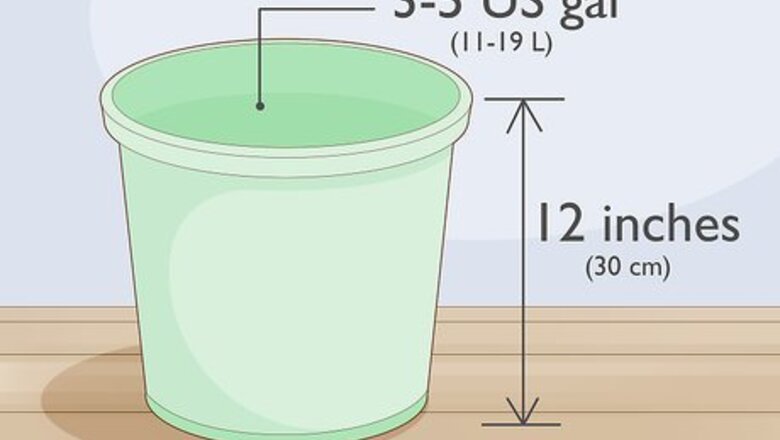
views
X
Trustworthy Source
Harvard Medical School
Harvard Medical School's Educational Site for the Public
Go to source
It’s commonly added for some extra crunch to stir-fry recipes, but it also goes great in gumbo, stews, and salads. It has a crunchy texture and mild flavor, somewhat reminiscent of eggplant or green beans.
Planting the Okra Seeds
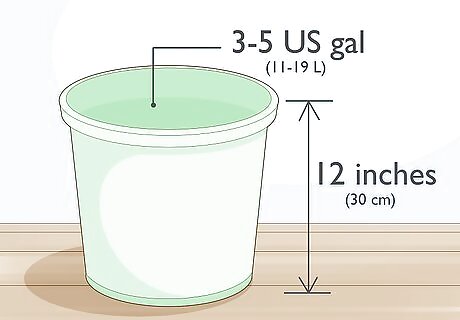
Use one 3 to 5 US gal (11 to 19 L) pot for each okra plant you want to grow. Ideally, choose a pot that is at least 12 inches (30 cm) deep so it can accommodate the okra’s roots. You could use ceramic, concrete, cement, clay, or even plastic containers—just make sure there are holes in the bottom for drainage. Okra thrives in the heat, so choose a black heat-absorbing pot if you can!
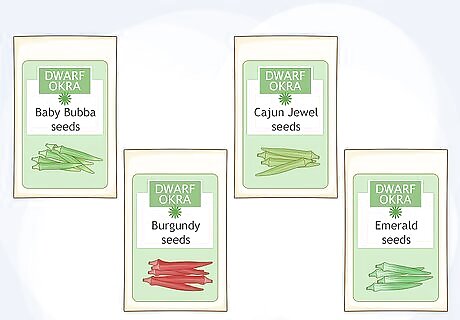
Opt for dwarf okra seeds so your plants won’t outgrow the pots. Non-dwarf varieties can grow to be 6 feet (72 in) or higher, and their roots wouldn’t have enough room to spread in a container. Dwarf okra shouldn’t exceed 3 to 4 feet (36 to 48 in). When buying seeds, look for these varieties of dwarf okra: Baby Bubba Bloody Burgundy Cajun Jewel Emerald Lee Prelude

Plant your seeds once the temperatures are consistently above 55 °F (13 °C). Okra is not frost-resistant and it won’t grow if it gets too cold. Wait 1-2 weeks after the last frost to ensure the temperature won’t dip down below 50 °F (10 °C) again. If you live in USDA growing zones 9-11, you can usually grow okra all year long.
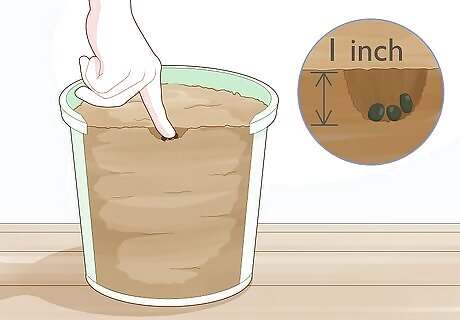
Bury 2-3 seeds about 1 inch (2.5 cm) deep in well-draining potting soil. Okra does best in sandy or loamy soil, so look for a vegetable-specific variety at your local garden supply store. Create a small hole in the center of the pot and drop in the seeds. Cover them up with soil. Using several seeds in each pot should hopefully guarantee that at least one of them will take root and germinate.
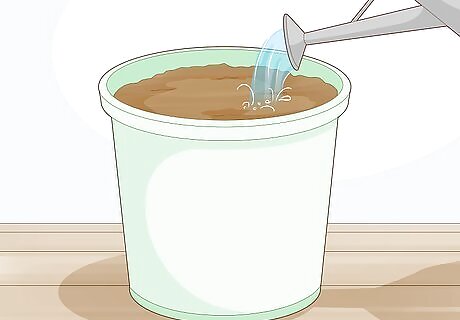
Water the soil until it is damp to the touch. After you’ve planted the seeds, gently water each pot until the soil is saturated all the way through and some water is coming out of the bottom of the container. Avoid using too strong a stream of water, as that could dislodge the seeds or disturb the soil. It’s normal to see some shrinkage in the soil as it gets compressed by the water. As long as the seeds stay buried, you don’t need to worry about adding more to the pot.
Caring for Your Okra Plant
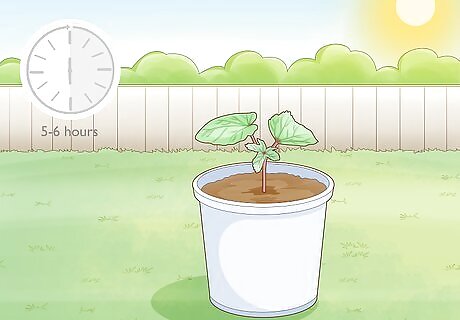
Place the pots outdoors where they can get 5-6 hours of direct sunlight a day. Okra loves sunlight and heat and needs lots of it to thrive. If you can position your pots somewhere they’ll get more than 6 hours of sunlight, that’s even better. Okra can withstand high temperatures, so don’t worry about it getting scorched in the heat. As long as you water it regularly, it should do well.
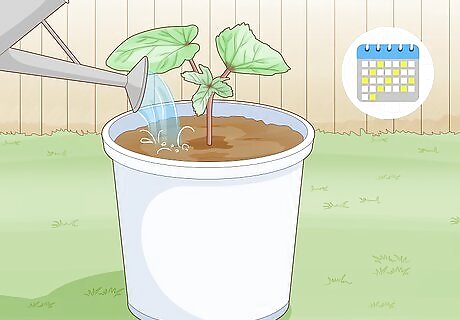
Water your okra plants every 2-3 days to encourage bountiful growth. Stick your finger into the top 1 inch (2.5 cm) of the soil. If it isn’t damp to the touch, give it about 1 inch (2.5 cm) of water. If the temperatures are extremely high, you may need to add water every day. For a 3 to 5 US gal (11 to 19 L) pot, 1 inch (2.5 cm) would equal about 8 cups (1.9 L) of water. While you want the soil to be damp, you don’t want it to get muddy. If the soil does get over-saturated, give it a few days to regulate before watering it again.

Bring your plants indoors if the temperature is going to drop below 50 °F (10 °C). Depending on your region, you may experience unpredictable frosts late into the spring. Keep an eye on the weather forecast and take time to migrate your potted okra anytime the temperature is going to dip uncharacteristically low. Move the pots back outdoors as soon as possible so they get the sunlight they need.
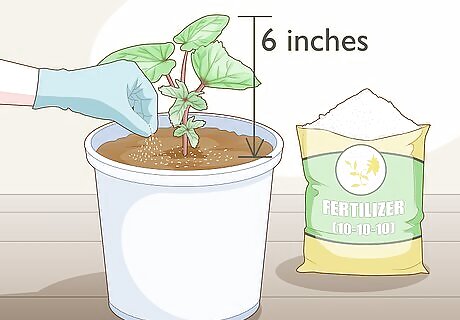
Fertilize the soil once the plant has reached 6 inches (15 cm) tall. Opt for a 10-10-10 fertilizer, and lightly sprinkle it over the top of the soil in each pot. Avoid getting any granules on the plant itself, as it could harm the delicate leaves. A 10-10-10 fertilizer means that the composition is made up of 10% nitrogen, 10% phosphorous, and 10% potassium. You could also use a water-soluble fertilizer to fertilize as you water the soil. Just follow the instructions on the fertilizer and use it once the plants are about 6 inches (15 cm) tall.Maximizing on Space: Once your okra has started to grow, you can fill in extra space in each pot with other vegetables or herbs. Consider planting lettuce, radishes, mint, peppers, beans, or peas around the edge of the pot.
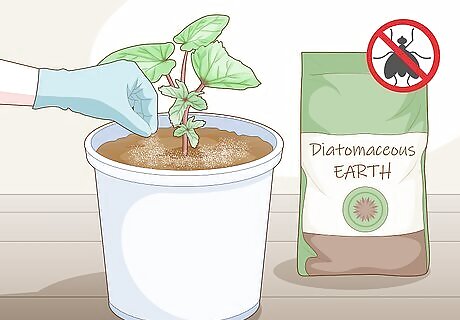
Sprinkle the soil with diatomaceous earth if you notice insects or pests. Potted okra shouldn’t be a huge temptation to pests, but it isn’t immune to them. If you see mites, whiteflies, or aphids on the leaves, lightly cover the soil with a sprinkling of diatomaceous earth. You can buy diatomaceous earth from your local garden supply store or online.What is Diatomaceous Earth? Diatomaceous earth is a non-toxic pesticide made up of fossilized diatoms, which are little organisms found in various bodies of water. It works by dehydrating and killing whatever insects or pests it comes into contact with.
Harvesting and Storing Okra
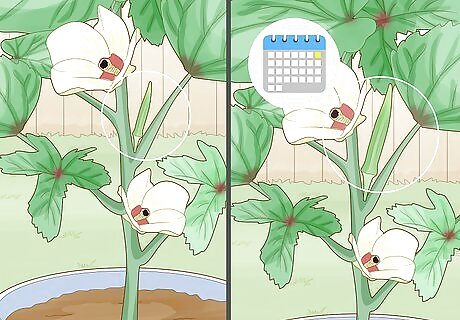
Keep an eye out for pods about 5-7 days after the okra has flowered. Once the okra begins to bloom, you can expect an abundant harvest within the next 1-2 weeks. As flowers appear, start checking on the okra daily so you don’t miss the peak picking time. Okra will usually flower about 50-65 days after it was planted. You can generally expect your okra plants to produce harvestable pods for about 10-12 weeks.

Pick the pods when they are between 3 to 5 inches (7.6 to 12.7 cm) long. Use a sharp knife and carefully cut the stem of each pod to remove it from the plant. Okra can be a little prickly, so wear gardening gloves if you have sensitive skin. Pods that exceed 6 inches (15 cm) are generally going to be too tough to eat. You can test them by trying to break off the tip—if it snaps away easily, the pod should still be good to eat.
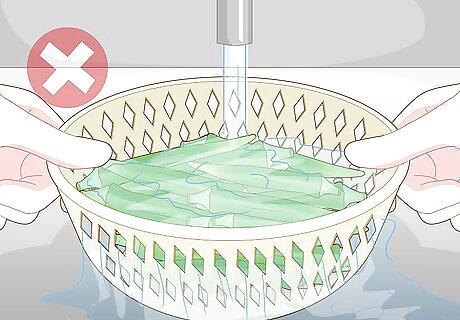
Wait to rinse the okra until right before you’re ready to eat it. Many vegetables can be rinsed before they go into the fridge, but okra tends to get slimy when it’s wet. When you’re ready to eat the pods, just give them a quick rinse under cool water and pat them dry with a clean paper towel. When okra gets wet, it can sometimes get slimy. While the texture of the slime is somewhat off-putting to a lot of people, it isn’t harmful and can actually be good for you! Some cooks recommend soaking okra in white vinegar for 30 minutes before drying it off and cooking it to prevent it from becoming slimy.

Store harvested okra in the fridge and use it within 2-3 days. Pop the harvested okra in a resealable plastic bag and place it in your fridge. If you aren’t going to use it within a few days, freeze or can it so it doesn’t go to waste. Don’t rinse the okra before putting it into the fridge. Throw out any okra that is discolored, mushy, or smelly.
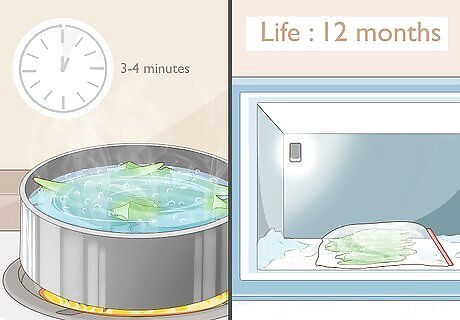
Blanche and freeze okra to use it over the next 12 months. Rinse the okra and trim off the stems. Blanch the okra in a pot of boiling water for 3-4 minutes, then immediately transfer the okra to an ice bath for an additional 3-4 minutes. Completely dry the okra before transferring it to a resealable plastic bag and placing it in the freezer. If you’re freezing a large quantity of okra, you could separate it into smaller batches so it’s easier to use at mealtimes.



















Comments
0 comment